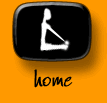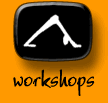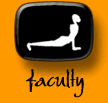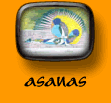

 |
 |
 |
 |
 |
 |
|
DOWNDOG | EAGLE | COBRA | HERO | HALF MOON | CORPSE | GATE
TRIANGLE | PEACOCK | LOCUST | COBBLER | SHOULDER STAND HEADSTAND | BRIDGE | CAMEL | COW FACE | UP BOW | INVERTED STAFF SEATED WIDE ANGLE | HEAD TO KNEE | TORTOISE | DANCER NOOSE  |
| Dwi Pada Viparita Dandasana ~ Two-Legged Inverted Staff Pose Images by Nancy Van Kanegan Like urdhva dhanurasana and other strenuous backbends, dwi pada viparita dandasana is not recommended if you have heart problems, high blood pressure, detached retina or glaucoma. You should also skip this pose if you are pregnant, menstruating or suffering from a migraine, severe headache, constipation, diarrhea or insomnia. Also, those with neck or back injuries should avoid this pose or do it very carefully. And unless you find backbends easy, you'll want to be thoroughly warmed up before you push up into this demanding asana. Sun salutations, shoulder openers, and less intense backbends such as setu banda sarvangasana (bridge) or urdhva dhanurasana (up-bow) are good ways to prepare for dwi pada viparita dandasana. Once you've warmed up, lie back, bend your knees and draw your feet toward your hips so your ankles are under your knees, with your feet and legs together (or at least as close as you can and still lift up). Take your arms up overhead, bend your elbows, and place your hands palms down (fingers pointing toward your hips) near the top of your shoulders. If you are tight in the shoulders and chest, you may want to place your hands slightly more than shoulder width apart, with the index fingers parallel, so you can keep your elbows in line with your wrists. Be sure your pelvis tips forward a bit so you can keep the natural arch in your lower back (you'll be able to slide one hand under if you do). Take a big inhale, drawing your armpits into your ribs and gathering energy into your core. With the exhale lift up your hips and shoulders and come to the top of your head. Take one hand behind your head and press the elbow into your mat. Then take your other hand behind your head and interlace the fingers of both hands, as in supported headstand. Keep the elbows firmly grounded, the shoulders lifting up and back, and the shoulder blades digging into the rib cage and pushing it forward. Take another big inhale, and with the exhale lift the hips higher, keeping the sacrum moving in and up and the tail in and toward the knees. Move the chest forward and the shins in the opposite direction as you squeeze the legs together and open the armpits. Hold for five big breaths -- or longer if you like. To come down, unclasp the hands and one at a time place them palms down, fingers pointing toward the feet as you had them before. Push into the hands, lift the head a little and tuck the chin. Then lower the shoulders and hips down. Alternatively, unclasp the hands, push into the elbows to lift the head and tuck the chin, then lower the shoulders, sliding the hands back over head as you lower the hips. If this was fairly easy and you want to go fully into the pose, go up as before. Then straighten the legs by taking the feet forward one at a time. Try to keep the feet and legs together. Roll the thighs in and draw them toward the hips as you press into the heels and lift the thighs, calves and hips higher. Keep extending as you lift. After several breaths, walk the feet back and lower down as before. Because it's often difficult at first to keep the elbows pressing down enough so they don't slide back as you lift more into the pose, you might want to practice where you can place the elbows against a wall. This will enable you to move the chest higher and toward the wall without the elbows slipping. Alternatively, place the feet against a wall and have a friend press your elbows down so you can lift higher without sliding one way or another. If you have difficulty getting your elbows down at all, try practicing the pose with your feet on blocks or a chair placed against the wall. By elevating your feet, you'll find it easier to keep your elbows down and open your chest without straining your lower back. When you're just starting out, you may also find it easier to get into the pose if you have your feet and knees hips-width apart. If you don't feel ready for this strong version of dwi pada viparita dandasana, try the preparations for it that involve bending back over a chair to open the chest and stretch the legs without requiring so much effort. While there's not enough room here to describe these preparations, you can find excellent descriptions of them in Yoga the Iyengar Way by Silva, Mira and Shyam Mehta; and Yoga: The Path To Holistic Health by B.K.S. Iyengar. Or work with a teacher trained in Iyengar-style yoga. After you come out of a vigorous dwi pada viparita dandasana, you'll find doing some twists will help release any tension in your spine. For example, try a version of jathara parivartanasana (reclining twist) by lying back and bringing your feet in near your hips, with your feet and knees together and your arms out to the side. Lower your knees together to one side, then the other -- maybe extending your legs out to the side as well -- as you look the other way. Or do a simple seated twist out of sukhasana or dandasana. Then lie back in upward facing child's pose, where you lift your feet off the floor, clasp your hands together over your shins and draw your thighs toward your ribs. Or do regular child's pose. In either one, rest and notice how your breath is easier, your mind and emotions quieter, and your heart more open and happier. Text by Tim
Noworyta |
||
|
E-mail: info@yogamind.com | Return Home :: mindfully designed by braddon.com :: |